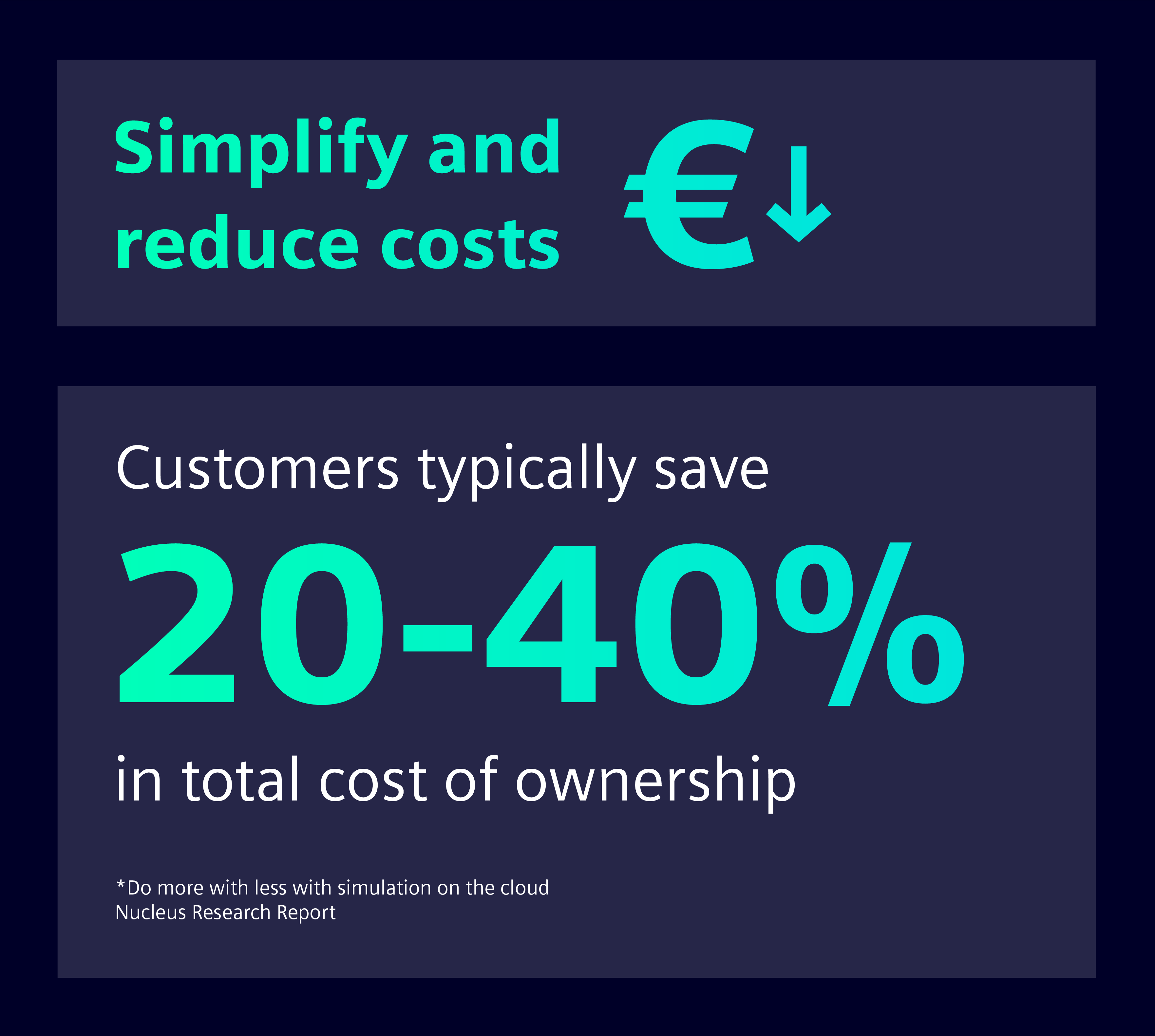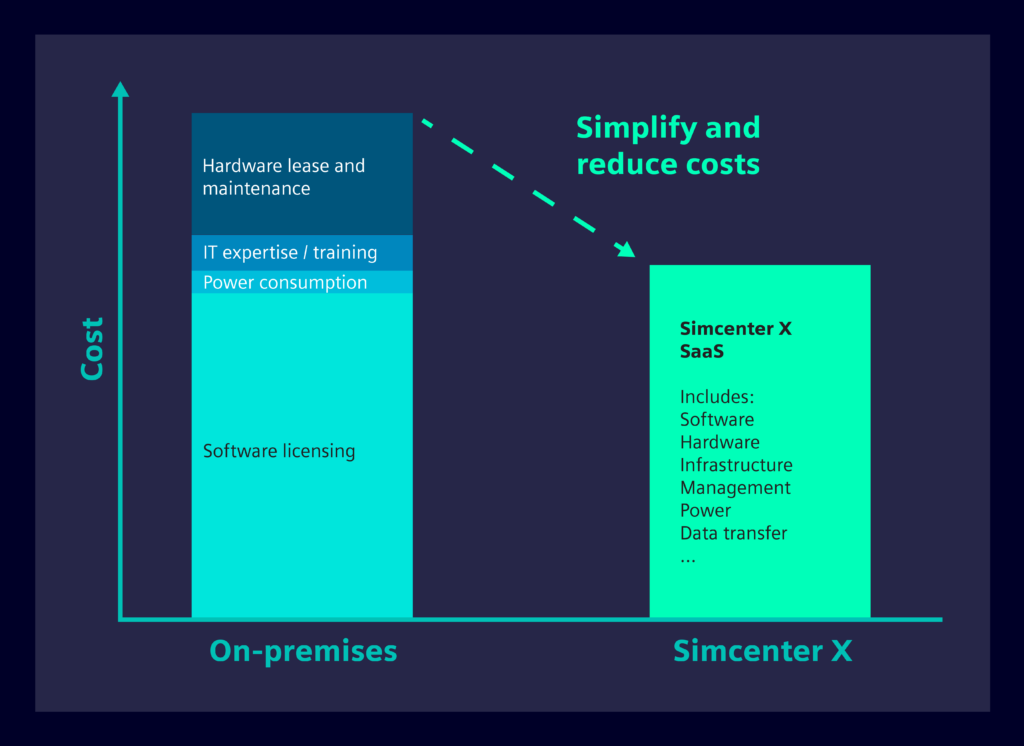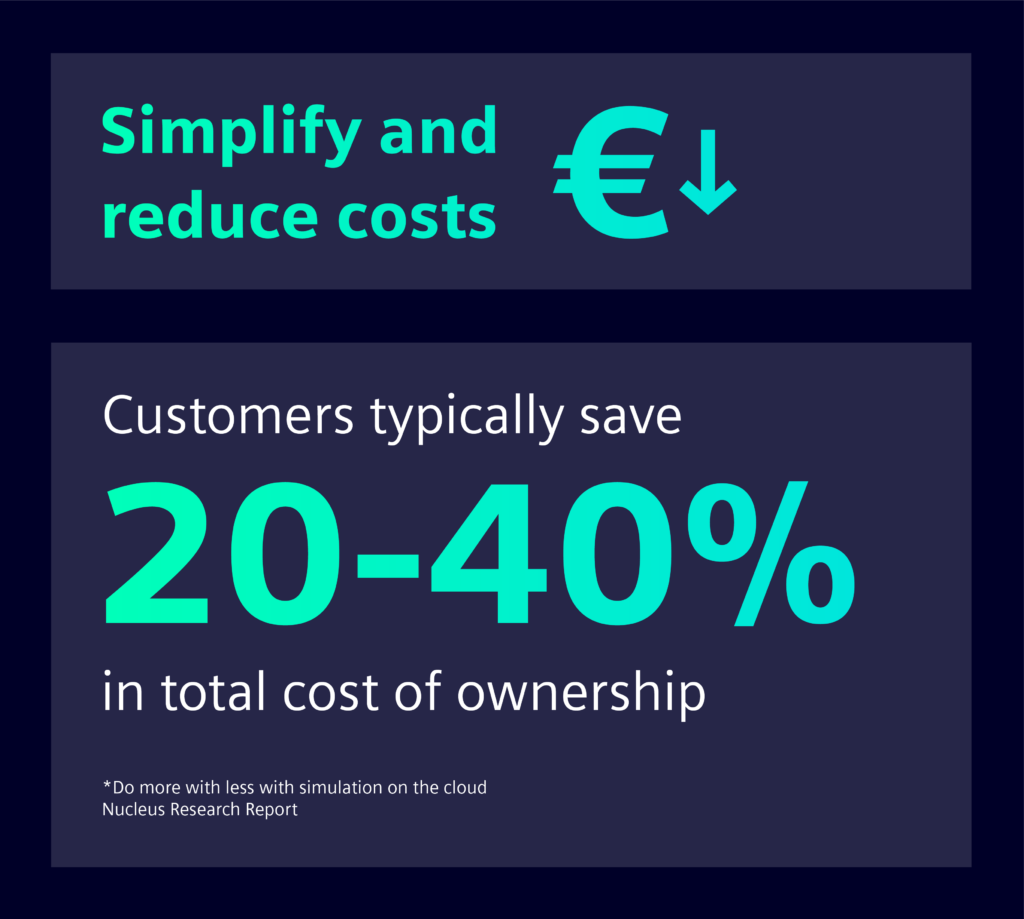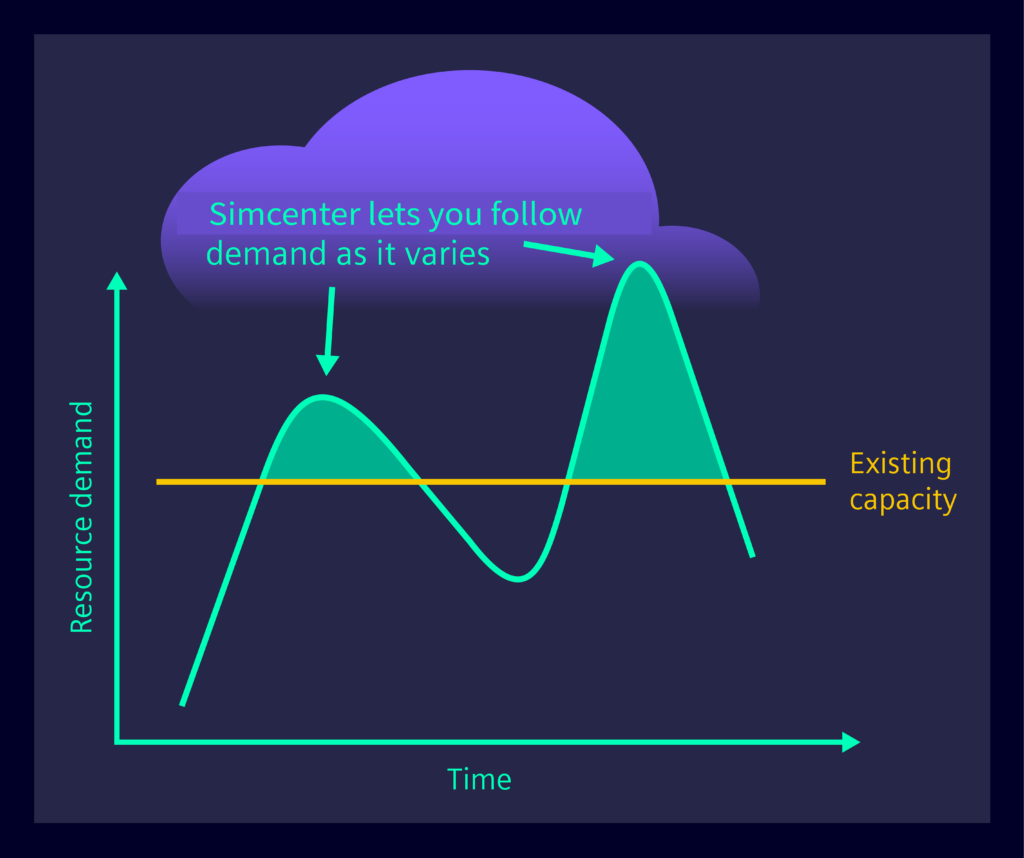Can the cloud transform your TCO for CFD and HPC (total cost of ownership)?

Simcenter X leads the way in cost efficiency and productivity
Cloud computing is at the forefront of many business leaders’ minds. Why rely on your own servers to provide basic functionality like email, word processing, and file management when subscribing to cloud services can do it all for you at a fraction of the cost, in terms of the total cost of ownership (TCO)? Not only is this more cost-effective, but it also means that maintenance, security, and reliability are taken care of by Software as a Service providers.
However, when it comes to state-of-the-art CFD simulation, you still need your own HPC infrastructure to get the most out of it, right?
Wrong.
More and more organizations are switching to cloud-based CFD simulation because it gives them all the computing power they require as well as the flexibility to access it immediately when they need it from anywhere in the world.
This must make it more expensive than managing your own HPC hardware though, surely?
Wrong again.
In fact, many customers have found that transitioning to Simcenter X not only improves efficiency and capabilities but also reduces TCO (total cost of ownership) of simulation solutions.
Are you ready for the CFD cloud HPC transition?
An on-premise solution isn’t just about having your own equipment. Consider whether it makes better financial sense to move to the cloud, starting with a basic cost assessment of the cloud licenses versus investing in and maintaining new hardware and all the operational overheads that contribute to HPC TCO such as:
- Hardware lease and maintenance,
- IT expertise and training,
- Power consumption, and
- Software.
Also, analyze how much your demand fluctuates and how much of your capacity would be regularly unused if you scaled up your own HPC hardware to meet peak demands.
Finally, estimate the impact of downtime due to hardware failure. Cloud platforms are much more resilient, offer higher reliability, and recover quicker from failures than on-premise HPC solutions. This could be the difference between winning a major contract or delivering a project on time.

Ditch your outdated hardware for cloud-based CFD and see how much you could save in TCO
We asked Nucleus Research to interview several customers about moving to Simcenter X and they found that customers could typically save between 20% and 40% by simplifying and reducing the total cost of ownership compared with on-premise HPC for CFD simulation.
With Simcenter X, all the costs listed above are simplified into SaaS licenses billed at an hourly rate. This means that you only pay for the resources you need, when you need them, often making it significantly cheaper than running CFD simulation on your own HPC hardware.

One global automotive manufacturer, with over 16,000 employees, would save around €242,000 over four years, equivalent to 17.4% of its previous costs. And Simcenter X isn’t just for big businesses. A Canadian engineering consultancy of 25 staff with a $6 million revenue saved CA$323,000 or 42.72% over four years.
Not convinced yet?
Simcenter X isn’t only about saving money by reducing TCO for HPC, take a look at these other key benefits.
Improved efficiency that packs a punch
The global automotive manufacturer began investigating cloud-based CFD because of reliability issues with its own hardware. It had experienced multiple cluster breakdowns lasting weeks at a time.
Moving to Simcenter X not only eliminated these problems but also allowed engineers to meet the increased demand at peak times by utilizing the flexibility of the cloud – something they couldn’t previously do. This enabled them to run business-critical simulations much faster, enhancing the company’s operational efficiency.

To do this on their own cluster, the manufacturer would have needed to invest significantly more to increase the total capacity to achieve anything close to these peak loads. With Simcenter X, they simply purchased more resources as and when they were needed.
Flexibility and scalability as standard
The flexible nature of Simcenter X is even more important for smaller businesses with smaller budgets. This was a key factor for the Canadian engineering consultancy firm as it allowed them to realize the same simulation computing power as much larger organizations.
As Simcenter X runs on Amazon Web Services (AWS), capacity is almost unlimited, so businesses can scale up or down as their projects demand. For new companies, this is a much more affordable way of providing CFD services and allows them to expand their resources at their own pace as required.
Security and availability
Simcenter X has been designed and architected to provide a robust and dependable high-performance computing (HPC) service for simulation users. Privacy, security and availability of the service are top priorities for Siemens and our customers and Simcenter X incorporates the combined knowledge and best practices developed by Siemens and AWS. Additionally, Siemens follows industry standards on privacy and security and holds a range of certifications. You can read more about the security and availability of Simcenter X here
Put a dent in your TCO with a hybrid setup
If you’re not sure about moving your entire CFD capabilities to the cloud, you also have the option to start slow and transition gradually. The flexible nature of Simcenter X allows businesses to continue running normal workloads on their own hardware while using the cloud platform for peak demands. So, you don’t need to get rid of your own infrastructure while it’s still in good working order, but you can get the extra capacity you require without making a large investment and start to feel the TCO benefits.



